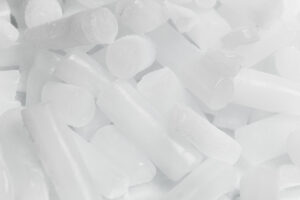How Dry Ice is Made: The Manufacturing Process Explained

Dry ice manufacturing is a fascinating process due to the unique nature of dry ice.
Dry ice, the solid form of carbon dioxide (CO₂), is widely used for a variety of applications, from preserving food to creating fog effects in theaters and films. Despite its common usage, many people don’t know how dry ice is made. The manufacturing process is fascinating and involves a combination of physics and chemistry to transform CO₂ gas into the solid, cold substance we know as dry ice. In this blog, we’ll take a closer look at how dry ice is made, its properties, and the processes involved in its production.
What is Dry Ice?
Before diving into the manufacturing process, it’s essential to understand what dry ice is. Unlike regular ice, which is frozen water (H₂O), dry ice is frozen carbon dioxide. One of its most notable properties is that it sublimates, meaning it changes directly from a solid to a gas without passing through a liquid phase. This characteristic is what gives dry ice its “dry” nature. It sublimates at a temperature of -109.3°F (-78.5°C), making it extremely cold and useful in situations where traditional refrigeration is inadequate.
The Source of Carbon Dioxide
The first step in the production of dry ice is sourcing carbon dioxide. CO₂ is a naturally occurring gas found in the Earth’s atmosphere, but industrial processes produce it as well. Common sources include fermentation processes in breweries, combustion of fossil fuels, and byproducts from chemical manufacturing. In the context of dry ice production, CO₂ is typically captured from industrial emissions or directly from natural sources like volcanic activity.
The Compression and Liquefaction of Carbon Dioxide
Once CO₂ is collected, the next step is to purify it to remove impurities. After purification, the CO₂ gas is pressurized and cooled to transform it into a liquid. This process involves compressing the gas under high pressure, typically around 870 pounds per square inch (psi), and then cooling it to a temperature of about -30°F (-34°C). At this stage, the CO₂ exists as a liquid, which is necessary for the next step in dry ice production.
The Formation of Solid Carbon Dioxide
To create dry ice, the liquid CO₂ is allowed to expand rapidly. This sudden expansion causes the liquid to evaporate, and as it does so, it absorbs a significant amount of heat, which causes a portion of the CO₂ to freeze into a snow-like consistency. This snow-like solid is then collected and ready for further processing.
Molding and Compressing the Dry Ice
The dry ice snow is not yet in its final form. To create the blocks, pellets, or other shapes commonly used, the CO₂ snow is compressed into molds. This compression process increases the density of the dry ice and forms it into the desired shape, such as large blocks, small pellets, or slices. The type of mold used depends on the intended application of the dry ice. For example, small pellets are often used in food preservation and shipping, while larger blocks are used for cooling and industrial purposes.
Quality Control and Packaging
Once the dry ice is formed, it undergoes quality control checks to ensure it meets the necessary standards for size, shape, and purity. After passing these checks, the dry ice is quickly packaged to minimize sublimation during transport. Since dry ice sublimates at a rapid rate, especially when exposed to higher temperatures, it is typically stored in insulated containers that reduce heat transfer and slow down the sublimation process.
Transportation and Storage
Transporting dry ice requires careful handling due to its extremely low temperature and the risk of sublimation. It is usually transported in insulated containers, and care is taken to prevent excessive exposure to air, which would accelerate the sublimation process. In addition, proper ventilation is necessary during transportation and storage because the sublimation of dry ice produces CO₂ gas, which can displace oxygen in enclosed spaces and create a suffocation hazard.
Environmental Considerations
One important aspect of dry ice production is its environmental impact. While CO₂ is a greenhouse gas, the CO₂ used to make dry ice is typically a byproduct of other industrial processes, meaning that its use in dry ice production does not contribute additional CO₂ to the atmosphere. Moreover, as dry ice sublimates, it simply returns to the atmosphere as CO₂ gas, without leaving behind any residue or waste, making it an environmentally friendly cooling option in many applications.
Dry Ice For All Your Needs
Dry Ice Corp is the largest regional supplier of dry ice and related products in the Northeastern United States. Our ice is fresh and delivered right to your doorstep. We are happy to help you determine the best way to ship your goods, whether you have a huge amount of cookies or a single pie, and help you select the perfect amount of dry ice for the job. Give us a call at (201) 767-3200 or contact us online for a quote. To connect with us online, be sure to follow us on Facebook, Pinterest, and Twitter.



